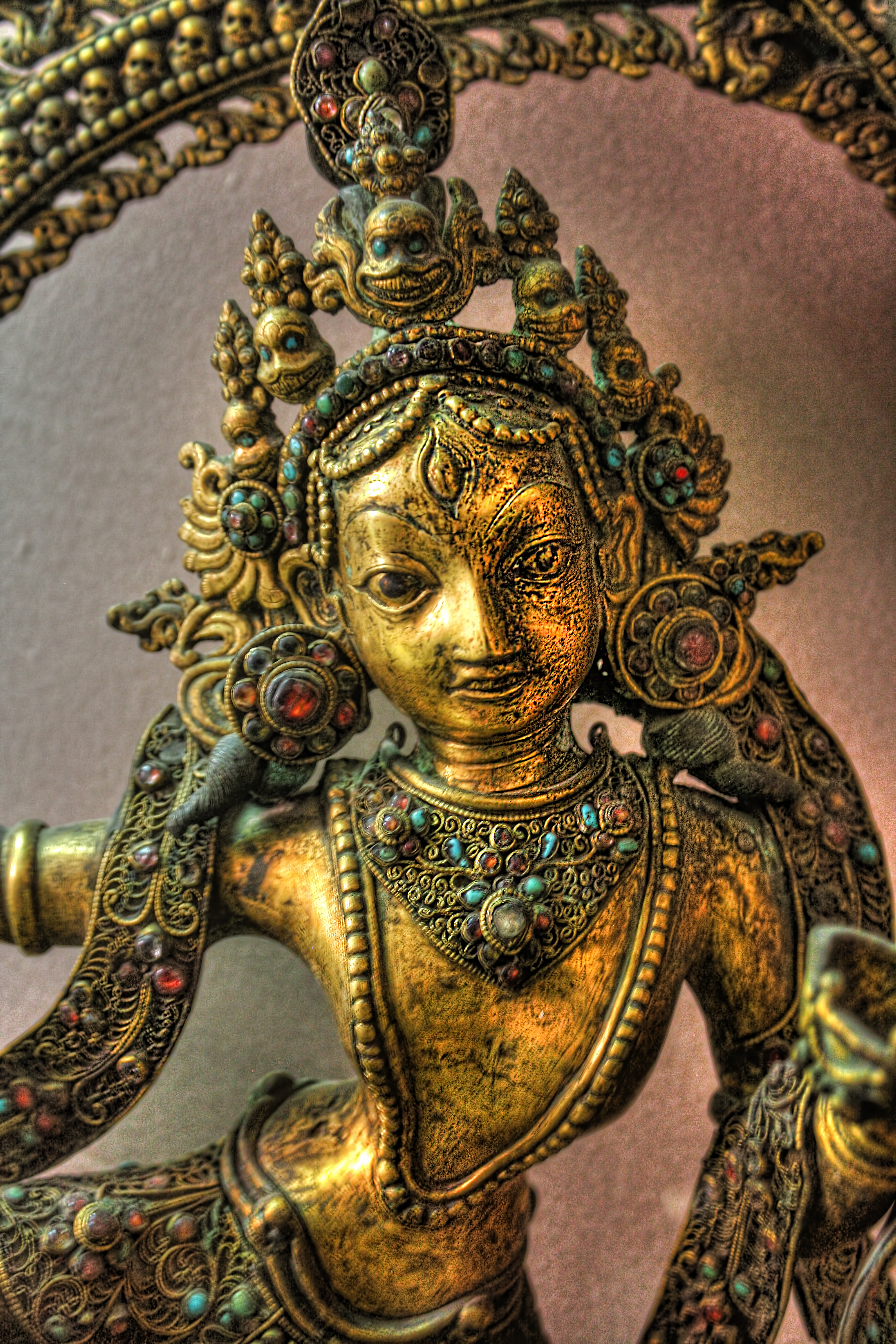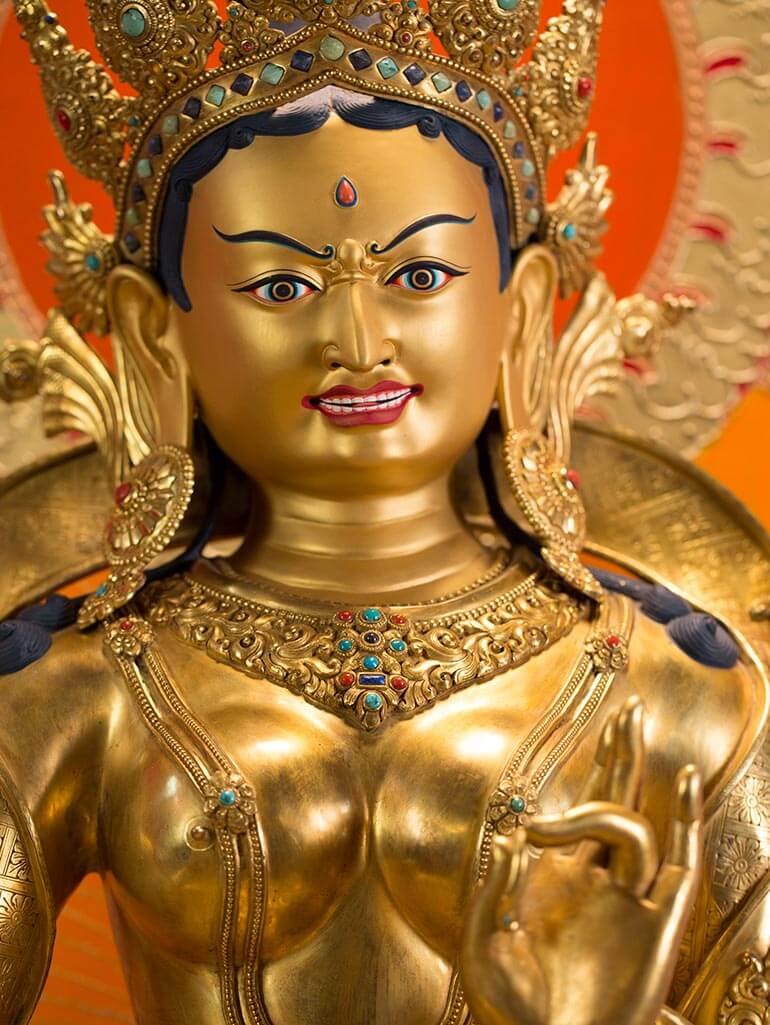Exploring Tara: Beyond The Name 'Ferguson' And Into Her Wikipedia Presence As A Buddhist Deity
Have you ever found yourself searching for "Tara Ferguson wikipedia" hoping to uncover details about a person, perhaps a celebrity or a public figure? It's a rather common thing to do, you know, looking up names online. Yet, sometimes, a simple search like that can lead you down a truly different path, to something far more ancient and, in a way, deeply spiritual. This article, you see, is all about that fascinating turn, bringing to light the incredible figure known simply as Tara, a powerful and beloved presence in the world of Tibetan Buddhism.
It's interesting, isn't it, how a name can have so many different meanings and associations? While "Tara Ferguson" might suggest a modern individual, the name "Tara" itself holds centuries of rich history and profound spiritual significance. Here, we're going to talk about Tara, the revered deity, often called the "Mother of Liberation," whose wisdom and compassion have guided countless followers for ages. She's a figure of immense importance, truly.
So, if you came here wondering about a person named Tara Ferguson, you're in for a delightful surprise. We're going to explore the compelling story of Tara, the Buddhist goddess, what she represents, and why she's such a central figure in various spiritual traditions. Her story, you could say, is quite a powerful one, and it continues to resonate with many people today.
Table of Contents
- Who is Tara: Her Identity and Significance
- Key Attributes of Tara: A Closer Look
- The Mother of Liberation: Her Compassionate Role
- Tara as a Buddha: Embodiment of the Divine Feminine
- Worship and Guidance: How Tara Helps Followers
- Awakening Our True Nature: Meditation and Virtues
- Tara Across Cultures: A Global Presence
- Frequently Asked Questions About Tara
- Conclusion
Who is Tara: Her Identity and Significance
Tara, or Ārya Tārā, is a truly special figure, often known as Jetsün Dölma in Tibetan, which means "Venerable Mother of Liberation." She is, in a way, a female bodhisattva, someone who has reached enlightenment but chooses to stay to help others. This makes her incredibly compassionate, you see, and very approachable for many who seek spiritual guidance. Her presence is deeply felt, especially in Tibetan Buddhism, where she holds a rather unique and powerful spot.
She's not just any deity; Tara is often seen as the "mother of liberation," which is a pretty big title. This means she helps people break free from suffering and find their true path. She also represents the virtues of success, something many people are looking for in their lives, too. She is, in some respects, the wisdom mother of the Buddhas, embodying the compassionate activity of all the Buddhas. This makes her a central point for those seeking wisdom and kindness.
Tara is most famously known as a female Buddha and the very embodiment of the divine feminine. She is sometimes referred to as the Tara Goddess, which really highlights her powerful and nurturing aspects. In the Buddhist tradition, Tara is also a deity worshipped in Tibetan Buddhism that helps followers obtain enlightenment. She is, without a doubt, the most powerful female deity in the Buddhist pantheon, a truly remarkable figure, you know.
Key Attributes of Tara: A Closer Look
When we talk about Tara, there are some very distinct things that make her who she is. Her name itself, "Tara," means "star" in Sanskrit, which is quite fitting, isn't it? She is believed to possess the ability to guide followers, much like a star guides travelers through the night. This guiding light is a pretty central part of her identity, actually, helping people find their way when they feel lost.
In truth, she is the embodiment of our true nature, which is wisdom and compassion. Meditating on Tara helps us awaken to our innate Buddha nature and cultivate her virtuous qualities. She is an iconic Buddhist goddess of many colors, each representing a different aspect of her compassionate activity. So, while she is formally associated only with Buddhism in Tibet, Mongolia, and Nepal, she has become one of the most widely recognized and revered figures, reaching people far beyond those regions, too.
Her compassion is a hallmark; it's a very strong part of who she is. She is especially popular in Tibet, Nepal, and Mongolia, where her influence is profoundly felt. In Tibet, where Tara is the most revered female deity, she is seen as a protector and a source of comfort. Her presence offers a sense of security and hope to many, you know, and that is very important for spiritual seekers.
| Attribute | Description |
|---|---|
| Name Meaning | "Star" in Sanskrit, symbolizing guidance. |
| Tibetan Name | Jetsün Dölma ("Venerable Mother of Liberation"). |
| Primary Role | "Mother of Liberation," helping beings achieve freedom from suffering. |
| Nature | Female Bodhisattva, embodying wisdom and compassion. |
| Status | Female Buddha, most powerful female deity in the Buddhist pantheon. |
| Symbolism | Represents success, compassionate activity, and the divine feminine. |
| Associated Regions | Especially popular in Tibet, Nepal, and Mongolia. |
| Guidance | Believed to guide followers like a star, illuminating their path. |
| Inner Awakening | Meditating on her helps awaken innate Buddha nature and cultivate virtues. |
The Mother of Liberation: Her Compassionate Role
The title "Mother of Liberation" for Tara is not just a poetic phrase; it really describes her core purpose. She is seen as someone who actively helps beings escape the cycle of suffering and find true freedom. This is a pretty significant role, you know, given the struggles many people face in their lives. She's there to offer a helping hand, in a way, to those who are ready to receive it.
Her compassion is boundless, extending to all living things. She is often depicted as swift and ready to act, responding quickly to the pleas of those in distress. This aspect of her, her readiness to help, is something that truly resonates with people seeking immediate relief or guidance. It's a comforting thought, you know, that such a powerful figure is so accessible and willing to assist.
In the Buddhist tradition, liberation isn't just about escaping pain; it's about realizing one's true nature and achieving enlightenment. Tara, as the Mother of Liberation, provides the wisdom and the means to do this. She helps remove obstacles on the path, both inner and outer, making the journey towards spiritual freedom a little bit clearer. Her gentle yet firm guidance is a source of great comfort for many, actually.
She teaches, in a way, through her very being, that true freedom comes from cultivating kindness and understanding. Her presence is a reminder that compassion is not a passive quality but an active force that can transform lives. It's a very active kind of love, you could say, that she embodies, and it's something that can inspire us all to be a bit more caring towards others.
Tara as a Buddha: Embodiment of the Divine Feminine
Tara's status as a female Buddha is incredibly important, especially in a spiritual landscape that has often been seen as male-dominated. She represents the ultimate realization of wisdom and compassion in a female form, which is a powerful statement in itself. Her presence affirms the idea that enlightenment is accessible to everyone, regardless of gender, and that the feminine principle is just as vital in the spiritual journey, too.
She is the embodiment of the divine feminine, which means she represents qualities like nurturing, intuition, creativity, and unconditional love. These are qualities that are sometimes overlooked, but they are incredibly strong and transformative. Tara brings these aspects to the forefront, showing their immense spiritual value. She is, in a way, a beacon for balance and wholeness.
Her many aspects, often depicted through different colors like Green Tara or White Tara, each highlight a specific facet of her enlightened activity. Green Tara, for example, is known for swift action and overcoming obstacles, while White Tara is associated with long life and healing. These different forms allow practitioners to connect with her in ways that are most relevant to their immediate needs, you know, making her teachings very practical.
The concept of Tara as a Buddha also means she possesses perfect wisdom and has completely purified all negative emotions. She is not just a guide; she is a fully awakened being who can lead others to the same state. This makes her a truly inspiring figure, someone to look up to and aspire towards. Her enlightened state is a testament to the potential within each of us, actually, to achieve something truly remarkable.
Worship and Guidance: How Tara Helps Followers
Followers of Tara engage in various practices to connect with her, from chanting mantras to visualising her form. The purpose of these practices is not just to worship an external deity, but to internalize her qualities and awaken their own innate wisdom and compassion. It's a very personal journey, in a way, that involves deep reflection and commitment.
Her name means "star" in Sanskrit, and she is believed to possess the ability to guide followers, like a star guides travelers. This guiding principle is a central theme in her worship. When people feel lost, confused, or face difficult situations, they turn to Tara for clarity and direction. She offers a kind of inner compass, you know, that helps them navigate life's challenges.
Tara's guidance is not just about showing the way; it's also about providing protection. She is often invoked to avert dangers, overcome fears, and remove obstacles that hinder spiritual progress or daily well-being. This protective aspect makes her a very popular deity, especially in regions like Tibet, Nepal, and Mongolia, where life can be quite challenging, too. People rely on her for a sense of safety and resilience.
Through her practice, followers learn to cultivate fearlessness, a quality Tara herself embodies. She is depicted as calm and serene, even amidst chaos, showing that true strength comes from an unwavering inner peace. This teaching, that one can find peace even in difficult times, is a truly powerful message for anyone, really, trying to make their way in the world today.
Awakening Our True Nature: Meditation and Virtues
Meditating on Tara is a profound practice aimed at helping us awaken to our innate Buddha nature. This isn't about becoming someone else; it's about realizing the pure, enlightened potential that already exists within us. It's a journey of self-discovery, you know, where we peel back layers of misconception to reveal our true, compassionate selves. This makes the practice very personal and deeply transformative.
When we meditate on Tara, we're not just thinking about her; we're trying to cultivate her virtuous qualities within ourselves. These qualities include boundless compassion, unwavering wisdom, and courageous action. It's about learning to respond to the world with kindness and clarity, even when things are tough. This active cultivation of virtues is a central part of the path, actually, leading to greater personal growth.
Tara is an iconic Buddhist goddess of many colors, and each color can be a focus of meditation to evoke specific qualities. For instance, meditating on Green Tara might help someone develop swiftness in compassionate action, while White Tara could foster healing and longevity. This variety allows practitioners to tailor their meditation to their specific needs and aspirations, making the practice very adaptable, too.
The idea is that by focusing on Tara's enlightened qualities, we gradually transform our own minds. It's a bit like looking at a clear reflection; we see what's possible and then work towards embodying it. This process helps us purify negative patterns and strengthen positive ones, leading to a more peaceful and purposeful existence. It's a slow but steady path, you know, towards inner harmony and profound understanding.
Tara Across Cultures: A Global Presence
Although Tara is formally associated only with Buddhism in Tibet, Mongolia, and Nepal, she has become one of the most recognized and revered Buddhist deities globally. Her appeal transcends geographical and cultural boundaries, which is quite remarkable, isn't it? People from all walks of life, regardless of their background, find something deeply resonant in her message of compassion and liberation.
Her universal appeal stems from her embodying qualities that are universally valued: kindness, wisdom, and protection. These are things that everyone can appreciate and aspire to, you know, no matter where they live or what their beliefs are. She offers a sense of hope and empowerment, showing that even in challenging times, there is a path to peace and success.
In many ways, Tara represents a bridge between different spiritual traditions, too. While her origins are firmly rooted in Buddhism, her symbolism of a nurturing, protective female deity resonates with similar archetypes found in other cultures. This makes her a figure that many can connect with, even if they are not formal Buddhist practitioners. She's a truly global icon of spiritual strength, actually.
The continued interest in Tara, evidenced by her growing presence in books, art, and online discussions, shows her enduring relevance in our modern world. She remains a powerful symbol of spiritual awakening and compassionate action, inspiring countless individuals to cultivate their own inner wisdom and contribute positively to the world. Her message, it seems, is as timely today as it ever was, and that's a pretty wonderful thing.
Frequently Asked Questions About Tara
People often have questions about Tara, especially when they first learn about her. Here are some common ones that come up, you know, from those curious about this powerful deity.
Is Tara a real person?
No, Tara is not a real person in the way we think of historical figures. She is a revered deity, a female Buddha, and a bodhisattva within the Buddhist tradition. She represents enlightened qualities and principles, like compassion and wisdom, rather than having a physical, human existence. She is, in a way, a spiritual archetype, a very powerful one.
What does Tara represent in Buddhism?
Tara represents many things in Buddhism, but primarily she is the "Mother of Liberation" and the embodiment of wisdom and compassion. She symbolizes swift action in helping beings overcome obstacles and achieve enlightenment. She also represents the divine feminine principle and the virtues of success. She's quite a comprehensive figure, actually, covering many aspects of the spiritual path.
How can one connect with Tara?
People connect with Tara through various spiritual practices, such as meditation, chanting her mantra (Om Tare Tuttare Ture Svaha), and visualizing her form. The goal is to internalize her enlightened qualities and awaken one's own innate Buddha nature. It's a very personal journey, you know, that involves cultivating kindness and wisdom within oneself. You can learn more about Tara's teachings and practices on our site, and perhaps even find resources to begin your own journey with her.
Conclusion
So, while your initial search for "Tara Ferguson wikipedia" might have led you to a different kind of Tara, we hope this exploration of the Buddhist deity Tara has been truly enlightening. She is a profound and compassionate figure, revered as the "Mother of Liberation," embodying wisdom, success, and the divine feminine. Her guidance, like a shining star, continues to inspire and protect countless individuals on their spiritual paths, offering a powerful example of what compassion looks like in action. Her story, you could say, is a timeless one, still very relevant today.
Her role as a female Buddha, a guide, and a source of inner awakening makes her an incredibly potent symbol for anyone seeking peace, wisdom, or a deeper connection to their true self. She shows us, in a very clear way, that the path to liberation is open to all, and that cultivating virtues like kindness and understanding can lead to profound personal transformation. To delve deeper into the rich history and practices associated with this remarkable deity, you might consider exploring reputable Buddhist resources, such as those found at Rigpa Wiki, which offers a wealth of information. You can also discover more about the different aspects of Tara and her significance in various traditions by staying right here on our pages.

The Goddess Tara (Illustration) - World History Encyclopedia

Tara Reid - "All Eyez on Me" Premiere in Los Angeles 06/14/2017

The 21 Taras (10 to 12) - Tara Mandala